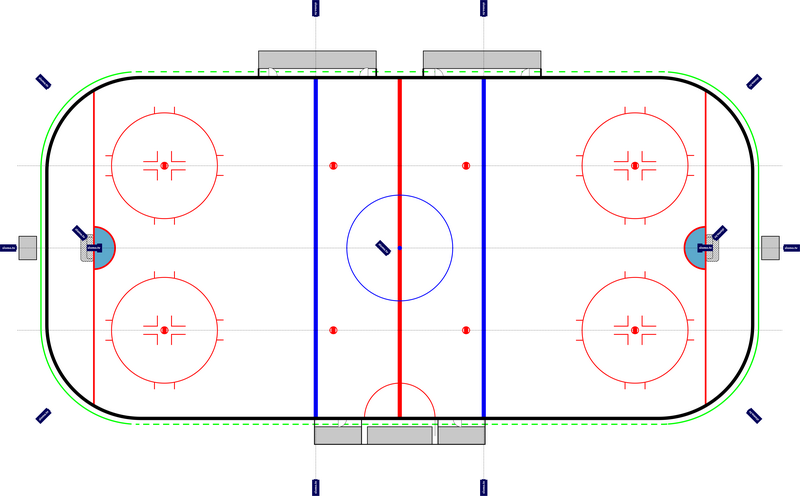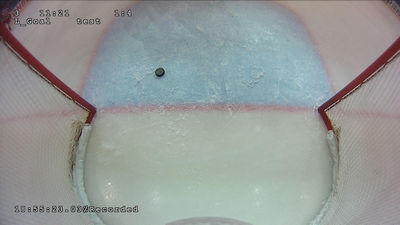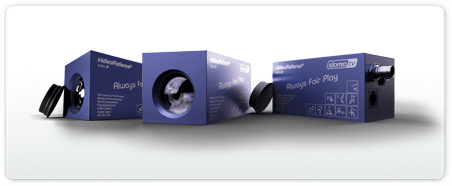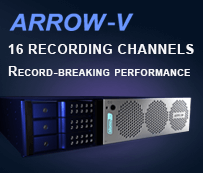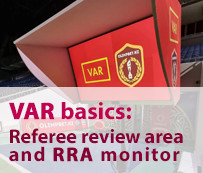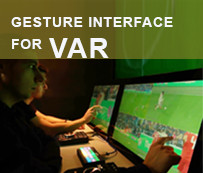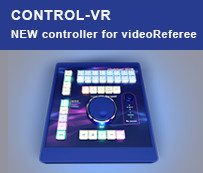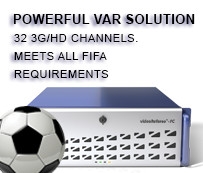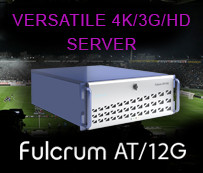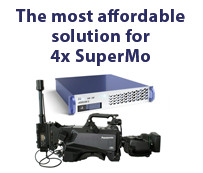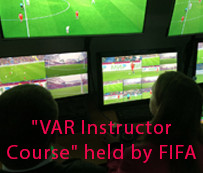mini-II-GoalNetCam – specialized in-goal camera for ice hockey VideoGoal system
Key features of mini-II-GoalNetCam
- 60 GHz radio channel for uncompressed video transmission
- Support for Full HD 1080p (50/59.94fps)
- Bayonet mount for quick installation and dismount in less than 30 sec
- Quick battery replacement. Anton Bauer Gold Mount batteries
- Separate camera head provides the best camera angles and is almost inaccessible to pucks
- The quick-release mount design allows changing the camera head in one minute and does not require reset of the angle
- Additional radio control channel for remote configuration, battery check and reboot
- Small transmitter size and streamlined shape reduces probability of puck damage
- Metal housing, protected connectors, specialized protection shield made of a hard rubber-like plastic
- The cable connectors on the camera head are recessed in the housing for greater safety and reliability
Battles in the goal area and a puck velocity of up to 150 km/h make it almost impossible to referee ice hockey matches without specialized technical means. In hockey there are special video referees (video goal judges), who make decisions on controversial moments based on the video from specialized cameras, including cameras installed inside the goal.
The in-goal cameras should be first of all wireless and battery operated. Since the operating conditions are very harsh – hits by a puck, low temperatures, moisture fluctuations, etc., these cameras must be reliable.
The new mini-II in goal camera , which is replacing the GoalNetCam and mini-GoalNetCam models takes into account our experience of many years in developing video-refereeing systems and specialized cameras.
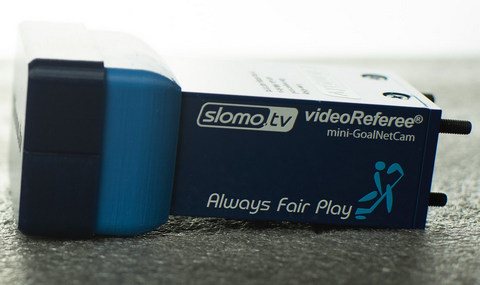
Separate camera module
An important feature of the new mini-II-GoalNetCam is that the camera module and the radio transmitter module are separated. This solution has several advantages:
- The possibility of installing the camera in an optimal location (the top frame element of the goal at the cross with the center back post). On the one hand, it provides the best camera angle, fully compliant with the requirements of KHL and VHL technical regulations. Оn the other hand, it provides maximum "survivability" of the camera. According to statistics, pucks and hockey sticks very rarely hit this spot of the goal.
- In case of a camera failure, instead of replacing the entire camera, only the camera head module has to be replaced.
Quick-release mount of camera module
The camera head module has a quick-release mount and allows changing the module even during a pause in the game. In accordance with the requirements of KHL and VHL regulations for the Videogoal system, the mount is made injury-safe. The focus of the ultra-wide-angle lens, which captures the goal line and the entire goal area provides maximum depth of field over a wide range of distances.
Metal housing of the camera module
The camera head module is fully metal and has an easily replaceable protection shield made of a special hard rubber-like plastic. This provides additional protection of the lens from the puck hits. As previous models the mini-II camera provides control of shutter speed, white balance, sensitivity, color correction.
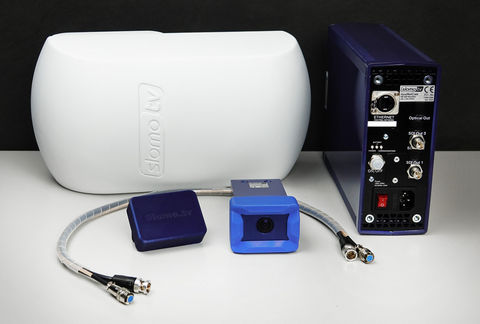
Downsized radio transmitter module
The camera separation into 2 modules allowed to reduce the size of the radio transmitter. Kevlar-reinforced plastic with increased elasticity and a special streamlined shape of the transmitter module ensure its "survivability" from puck hits. The module’s shape is designed to provide injury safe collision for hockey players during a struggle in the goal area.
60 GHz radio channel
The mini-II-GoalNetCam is equipped with a video transmission system that operates at 60 GHz and does not involve video compression. The 60 GHz band does not require licensing unlike the bands used by DVB-T radio channels and it is currently completely free, unlike 2.4 / 5.4 GHz used by Wi-Fi or Amimon transmitters.
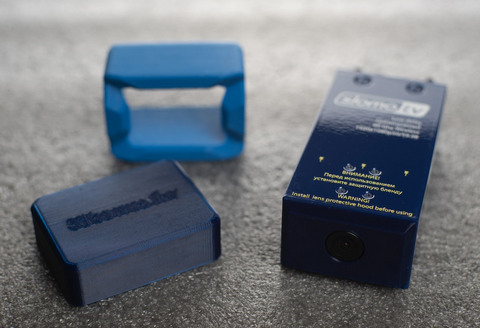
Quick-release mount of radio transmitting module
The bayonet mount the goal post of the radio transmitter allows the transmitter module to be quickly removed and reinstalled. If necessary, the battery can be changed in 30 seconds.
Dedicated control and diagnostics channel
The mini-II-GoalNetCam has a separate dedicated control and diagnostics radio channel to control the camera (settings, power on / off, battery monitoring, etc.).
Receiver module with optimal set of options
The receiving module is used to receive the video signal and control the camera and can be mounted on the same post, where the behind-the-goal camera is located. The receiver is controlled via standard 10/100 Mbit Ethernet using the available in the arena network infrastructure. The receiving module can be optionally equipped with an interface block with two Fiber Optics outputs and additional 3G/HD/SD outputs for integration into arena infrastructure or OB Truck environment.
Two power supply options
The receiver can be powered from 110/220 V mains or Anton Bauer battery with Gold Mount (optional), which allows a quick deployment of the camera in new sport arenas.
The camera is designed to be used with slomo.tv's videoReferee® servers.
Installation and use of the camera as part of the Videogoal solution
The camera is intended for the Videogoal system in ice hockey together with slomo.tv videoReferee® server.
The Technical regulations of Kontinental Hockey League (KHL) specify the requirements for the Videogoal systems in-goal cameras and their installation:
"... receiving video information from two hockey goals using color video cameras to have a full overview of the goal area with cameras inside the goal, behind the goal and above the goal. Video cameras and servers must have the following video output parameters: at least Full High Definition 1920×1080p or 1920×1080i, with a frame rate of at least 50 frames per second. The in-goal camera should be installed on the back vertical goal frame tube (in its upper part). The camera head (lens) should be located at the intersection of the top arc and the back center tube of the goal frame and be directed down to the goal line. The camera view should cover the whole goal line, the lower parts of the goal post and the goal area. The goal line in the camera image must be straight."
Location of the in-goal camera and its viewing angle according to the regulations
Depending on the competition level (MHL, VHL, KHL) the arena can be equipped with 4 to 16 cameras. The KHL compliant camera plan (15 cameras) is shown below.
Hover the mouse pointer over the camera to learn its function.
